On Hellion (Version 0.1.X)
Hellion is a lot of things; it’s a tough survival game, albeit without hunger & thirst; it’s a space building game, albeit currently without the ability to craft the ship pieces; and it’s also an MMO, albeit in a space that vastly dwarfs the player base, leaving them unlikely to accidentally bump into one another without forward planning.

Aside from that, it’s also a simulation, and in that, it’s pretty damn good. Momentum, and propulsion are well modelled, and various environmental elements -including gravity, pressure, and atmosphere- feel perfect, with more systems to come (temperature & radiation).
Allow me to meander the conversation for a moment here. I want to talk a bit about the appeal of Space Station 13; I assure you, I’ll come back around to Hellion shortly.
In Space Station 13, the controls are, frankly, obtuse, everything is dangerous, including to yourself, and the various systems -atmosphere, power, electronics, chemistry, research, medical, etc- are as deadly as they are, to the new starter, complicated. Trying to rewire a door can kill you, slipping off a beam can send you whirring into space, and any number of dumb things can happen to you, and many of those are fatal.
My first few visits to the various instances of the doomed Space Station 13 were done on small, abandoned servers as they awaited restarting; my friend and I explored the ruins of overrun stations, disassembled our way into hold-outs, traced back the stories of survivors from initial attack, through failed evacuation, to chunks of the ship blown away by players sacrificing themselves in last stands. We were haunted by ghosts, attacked by server stalking trolls, and reborn as monkeys and failed pod-people. We also, at several points -once our knowledge of the game was up- went onto densely populated servers… and, somehow it was weirder still. But, that’s a story for another op-ed.
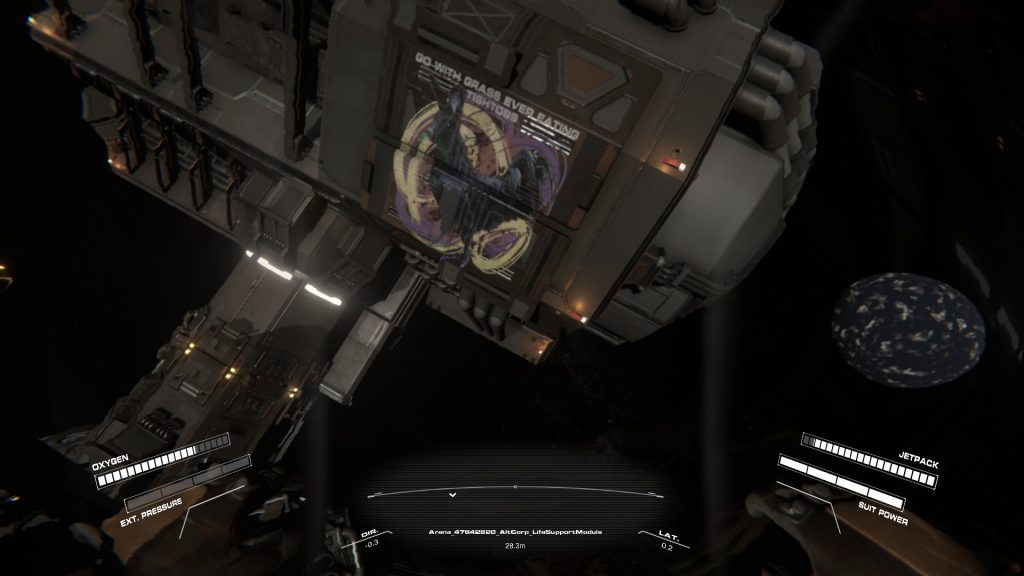
What I’m trying to get to, is that Space Station 13 was, on first play, completely unfathomable. There was so much going on -and only a server specific wiki, and a few YouTube videos for reference- and, so much to manage that, really, it was only the fact that we were determined to learn how to play which kept us pushing forwards. And, the payoff was massive.
That’s Hellion, albeit there’s certainly less scope, but the potential is there in the bucket load.
Once you’ve picked a server you get two places to start from, a random outpost, or from the cryo-pod you left Earth in 90+ years ago. Once you’ve played for a while there’s also a continue option, because your character persists with the server (the other options, that said, start a new character). The invite option also becomes available should a friend have assigned a cryo chamber to you on their ship. Handy.
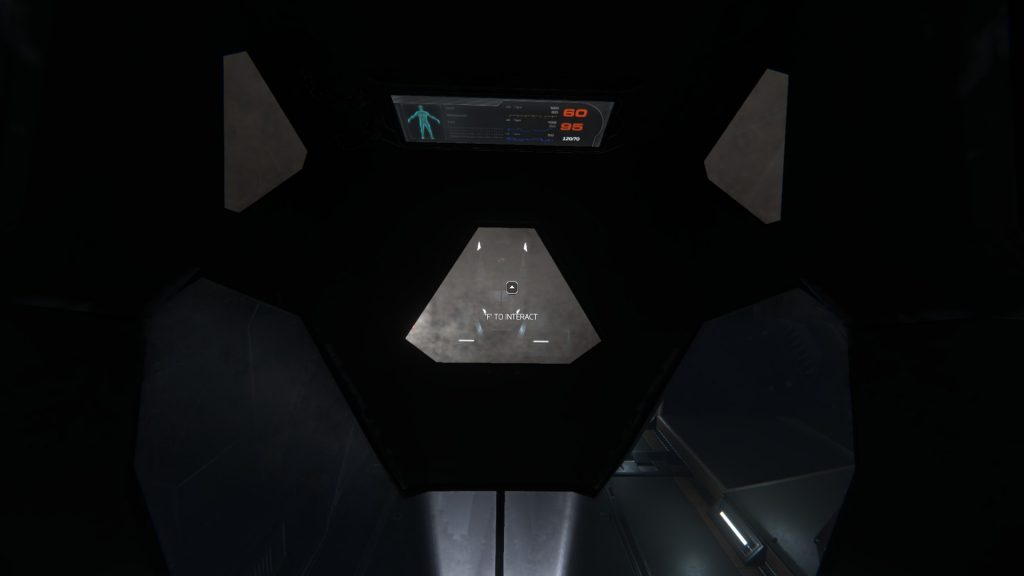
Cryo-pod start is definitely the way to go, mainly because it serves as a (unforgiving) tutorial that results in you having your own ship. This is, as of update 0.1.7, even easier now due to the inclusion of tutorial tablets, which guide you through the actions you’ll need to do in order to get your ship active. Although when I say guiding, they are moreso nodding in the general direction, with their arms crossed.
Your little safety boat has, as it turns out, been doing pretty well since you were put on ice; it’s running on back-up power, has a steady atmosphere (as nobody has been breathing it in), and has maintained pressure even though your vessel has, for some reason, been split into three parts just proceeding your defrost process.
So, as it stands, you hop out of your pod, shove a new filter into the atmospherics system, power on the solar panels and batteries, check your other systems are on, suit up, and head out into the darkness of space to try and get your ship back into a useful state.
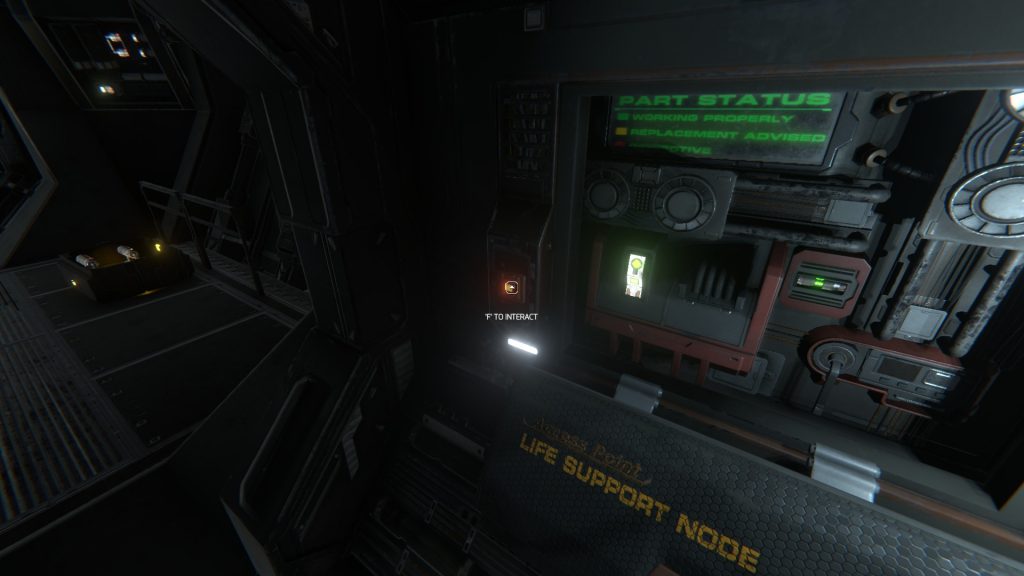
At first, this wasn’t simple, of course. I’d been walking around taking things out of other things in the dark, I’d managed to hit the big red button that turned off gravity, and I’d depressurised my ship while nosing around in the ventilation shafts. A few restarts later, however, and I was jetting into space to try and get my ship back together, and shortly afterwards learning about the navigation systems on each of the ship pieces (little panels where you steer the ship, viewing from a mounted camera).
It’s not, at first, very easy at all. As a matter of fact, the weighty crawl of your suit if you don’t have your jetpack on while in 0 pressure is cumbersome; and the clever -and by all intents and purposes- realistic simulation of momentum and propulsion can still be frustrating (and deadly) when distracted, but it all comes together in time.
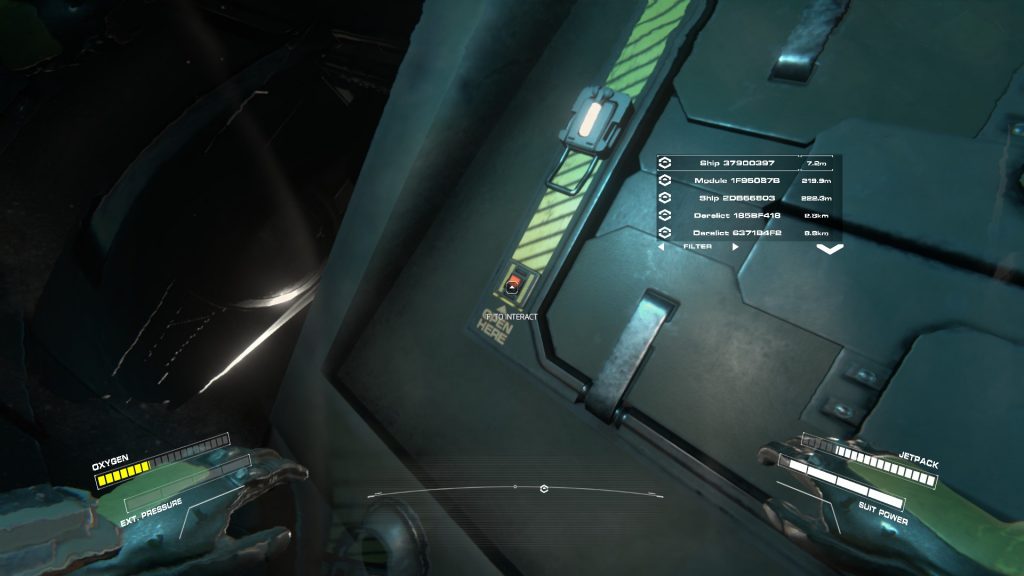
When explained well, the movement system is very easy to understand, so much so you feel a fool when you have issues (of your own accord) with it. Basically, you’ve got no throttle, and no stabilisers. When you jet forward in most games, you are really throttling up, with the ship maintaining that speed, and aligning direction based on your line of site. As an example, in Elite: Dangerous, if you aim forward, crank up the throttle, and then turn, your jets will re-angle you as you tilt your view, because your view matches -in that moment- your cockpit. In Hellion, if you pump 50X into moving towards a planet, and then accidentally overshoot the object you were aiming for, you would require 50X-wasteage in order to counteract your wasted momentum, and that would be, simply, to move you to a still position. Ergo, If you overshoot with W, but turn to face the direction you want to go (let’s say turning to the side) you’ll need to consider and counteract your current speed, with awareness of your course, in order to successfully alter that projection.
With a combination of no indicator for direction/momentum of movement, the amazing ability to be distracted, and impatience… well, those three are a recipe for disaster.
Patience, then, when navigating in the vacuum is key. Lots of small bursts to jet you roughly in the direction you want, and waiting for those bursts to carry you to your destination; that’s the way forward.
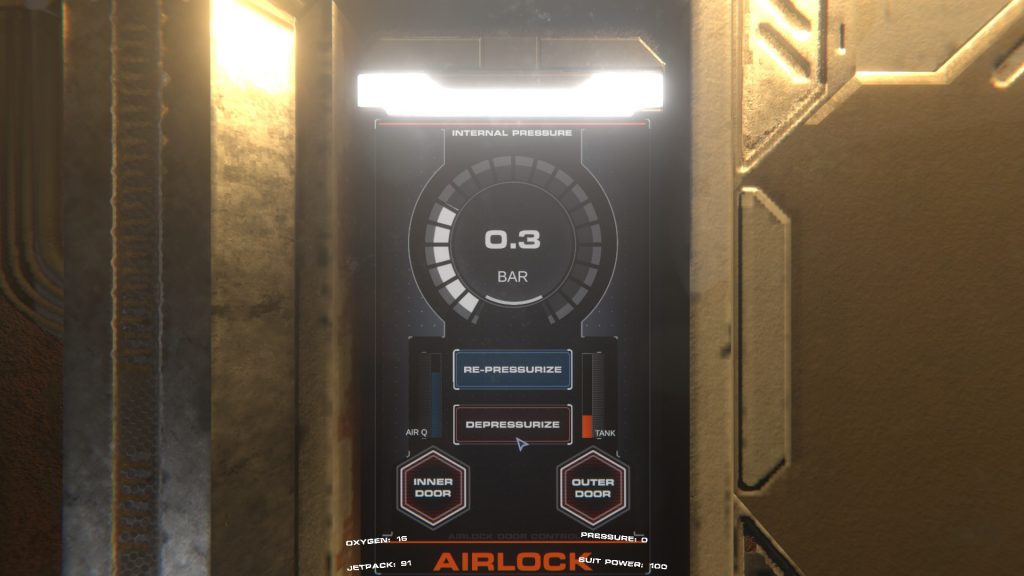
Obviously, patience, in those early moments, is hard. Especially as when you first set out from, or onto, your ship you are in the bargain-bin suit intended for use by 5-minute miner sorts. Once you’ve rodeo’d the airlock onto your ship however, you might be lucky enough to find an E.V.A suit which holds vastly more oxygen in its tank.
From there, from that tough tutorial it’s actually somewhat of a doozy. Resources are mined and refined with a simple interface; topping up the oxygen and nitro in your suit is as simple as hanging it on a rack and drag-dropping the chemicals over in an interface, and flying your ship is… well, no, that’s still hard as nails, as the same logic applies as with jetpacks; but you didn’t learn to drive in a day, so don’t expect to learn to fly in one.
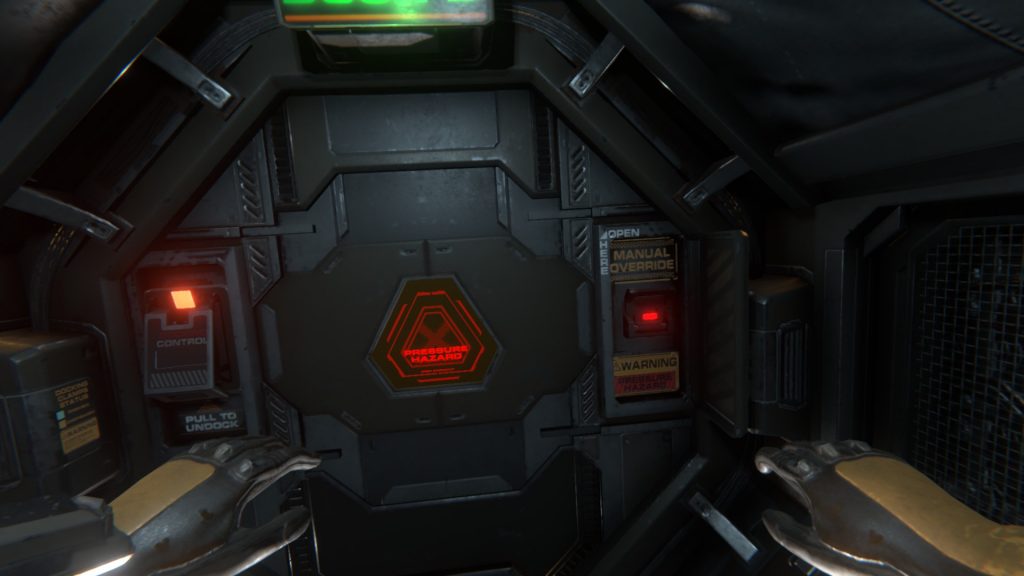
Let’s go back to that chemical interface for a moment, and, well, the setting and style all together. It’s absolutely wonderful; everything is designed in a functional way, somewhere between that ‘old-new’ of Alien with its anachronistic environs, to our current, Hollywood visions of future ships; clean, sterile, linear, angular & efficient. The interfaces reflect this well, with interactive screens displaying the most simple user-interfaces, one simply allowing the choices of “Solar Power” On/Off?, “Capacitor”, On/Off?. Even the walkways you form up by connecting ship pieces as you wish are equally user enabling – “Release Locks”, “Depressurise”, “Override Door”.
That clean, simple functionality, is perfect for multiple reasons. Firstly, it’s plain to understand. Secondly, it transcends complication. Thirdly, it’s absolutely implausible that we’re going to have a future where people like you and I are both allowed in space, and also allowed access to so many flashing red suicide buttons. It’s simply asking for chaos. That dormant chaos is what kept me playing. Yes, you are incredibly aware that yourself and two friends could seal someone in an airlock without a suit, disconnect it and send them into space… but, then, with the resting difficulty so volatile, why would you?
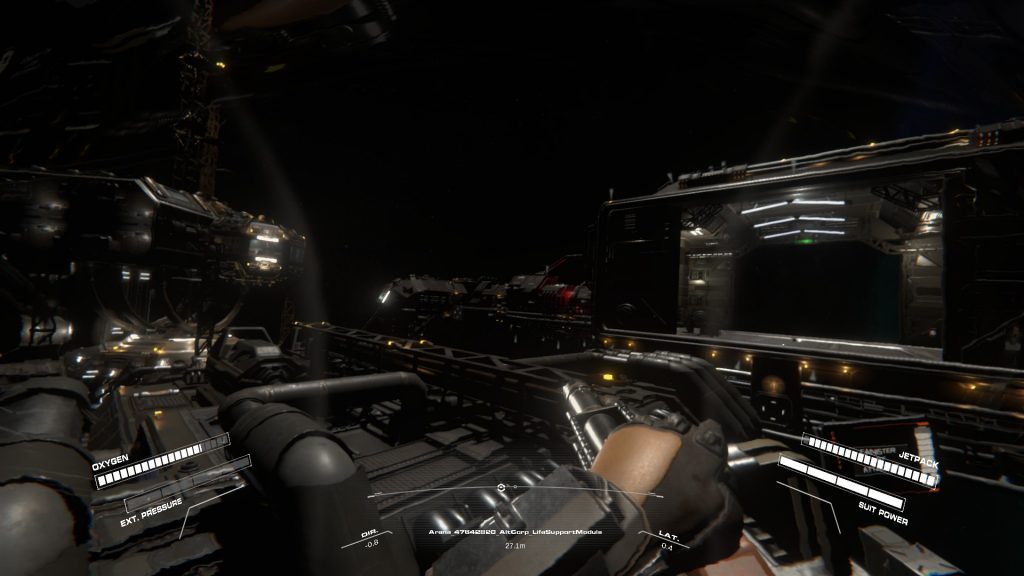
You see, there’s all this stuff just waiting to go wrong; it’s so easy in those early steps to make a silly mistake; there’s a system to everything, and consequences too. But, because of all of that it always feels possible to learn the ropes, to become an effective, functioning part of the simulator. That sense of danger is also a reassurance too; that once you finally get to a station of your own accord -assuming it’s not piled floor-to-ceiling with people who started out on the station- you’ll find other players who are aware of the ease of danger that besets the universe of Hellion.
Comments are closed.